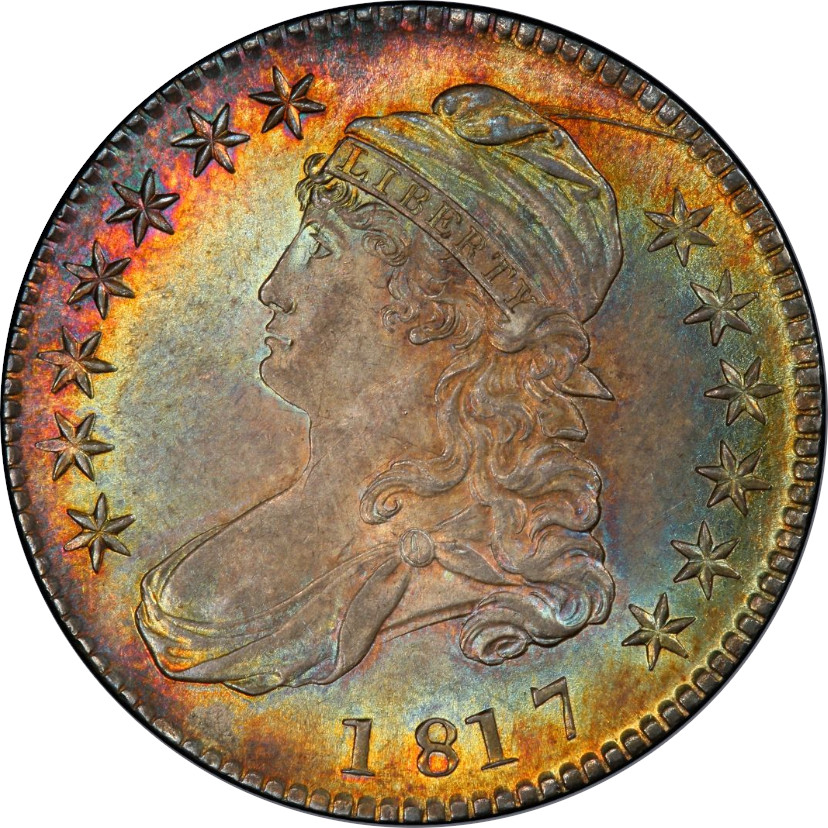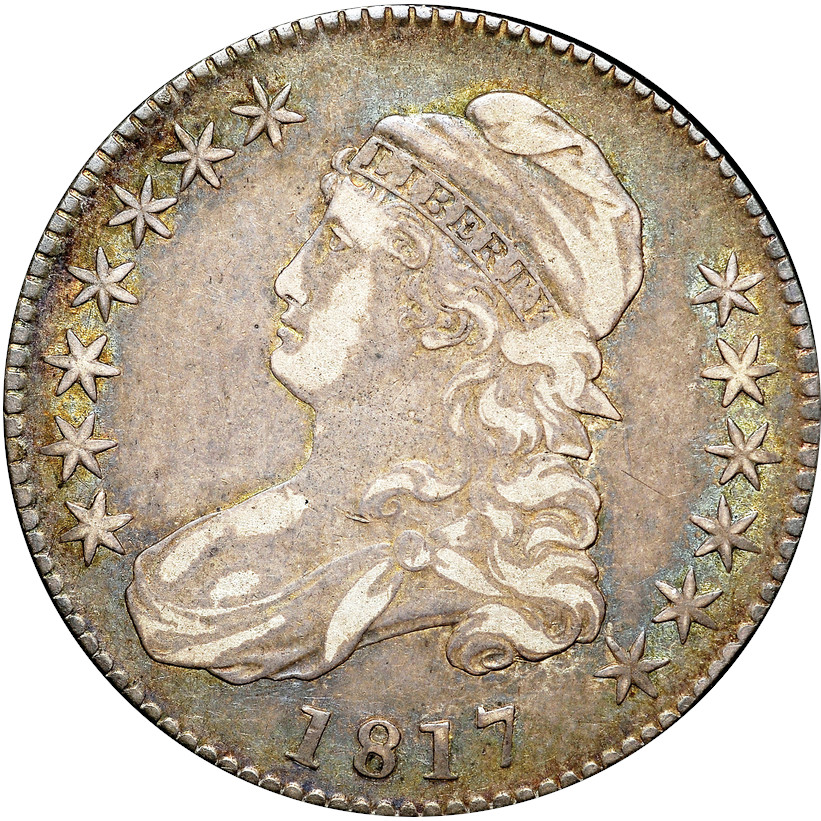Following along from last week’s data, boy do I have some interesting information to share.
I’m not going to get into specifics. But I sliced and diced the data already compiled, and the results seem pretty danged clear.

Now first of all, take this all with a grain of salt. The data is noisy and definitely spotty. It only includes auction results – it does not include private sales.
And, of course, past performance does not guarantee future results and all that jazz.
But this is interesting.
Looking at this data assembled in terms of general trends the old adage is decisively proven:
Common coins stay common, scarce coins get scarcer!
The Last Decade’s Value Trends By Rarity for Capped Bust Half Dollars
Over the past ten years:
All R.1 coins in all grades are the same price now as they were ten years ago, and
The higher grade coins are slightly down.
The R.2 coins are down in lower grades and,
in higher grades, are selling for the same prices as they were ten years ago or slightly up.
The R.2 Red Book coins are up in all grades but mid-VF (odd.)
The R.3 Red Book coins are up in lower grades – even details (?!), but the same or lower in higher grades.
The R.4 Red Book coins are at the same price points now as they were ten years ago.
And the R.7 Red Book coins (there aren’t very many) are about the same, maybe a little up from ten years ago.

The Last Decade’s Value Trends By Grade for Capped Bust Half Dollars
Put another way:
Most lower grade coins are trading for about the same prices they were ten years ago.
Low rarity mid-grade coins are selling for less than they did ten years ago.
Mid-grade coins of higher rarity and Red Book varieties are the same as they were or are up in price.
Low rarity, high grade coins are the same, some up, some down compared to where they were ten years ago.
High rarity high grade coins are up in general.
Take that as you will.

Recent Peak Values for Capped Bust Half Dollars
But wait, there’s more:
In general, across the board, the market for Capped Bust Halves peaked in 2015 or 2016. Almost all coins are selling for less now than they did a few years ago.
R.1 AUs peaked in 2012. They are down around 60% from their highest point. EFs peaked in 2016.
R.2 EFs seem to have peaked in 2014 while AUs peaked in 2015. It’s not clear how far off they are at this point, but it’s significant. They seem to be considerably off their high water mark price points, by over 40%.
R.2 Red Book coins peaked in 2015-1016. We’re talking most significantly in EF/AU coins. They seem to be currently down by about 30 – 60%. VFs are actually up.
R.3 Red Book coins peaked in 2016 in all grades. They’re off 25 – 40%.
R.4 Red Book coins peaked in 2016. They’re down at least 30%
Again, the data is spotty, and so don’t take this as gospel. But considering how consistent the data is across all coins, it seems pretty telling to this collector.
My recommendation is, as always, for this to act as a starting point for your own research. You may find something similar; you may find the exact opposite. But the general trend seems substantial. Use this general trends discovered here to compare against your own findings.
From all that though, can we look at the case of this specific year and answer the question:
“Given the same cost, should I spend my money on a rarer coin or a nicer coin?”
It seems pretty clear that in this case, you want higher grade coins (at least 40) in a higher rarity (at least R.3 or R.4 – you might be able to get away with a lower rarity number if it’s a variety listed in the Red Book). The best case seems to be to get a coin of high grade and high rarity (of course – that’s not rocket science). But also: in general, if you can afford it, get a coin of higher rarity, especially if it’s of a variety listed in the Red Book.
At least, that’s what’s worked over the past 10 years. That’s not a very long term look! And keep in mind that a great many coins are down, whether buyers plopped down $2,000 or $5,000 just a few years ago. Some of these coins are now trading for half what they did. But, if you’re spending $2,000 on a coin in this exact situation, you seem to have a better chance of getting return, rather than loss, on your investment.
Then again, it’s a possibility that if you get a coin that’s too rare, especially if it’s not nice, that there won’t be enough serious collectors to be able to afford it. It’s a possibility. Then again, you may rake in vast reward when you sell if the series gets popular and everyone and their mother starts collecting by O-number. (Unfortunately, this author does not have a time machine in which to travel to procure and return to give you the correct answer.)
Again, past performance is no guarantee of future results, and this is from sporadic data. The general trends seem pretty clear to us.
Whatever the case, we’d love to hear from you.
There you have it. A short article this week, but potent and with fascinating information.
So glad to be able to share it with you!
